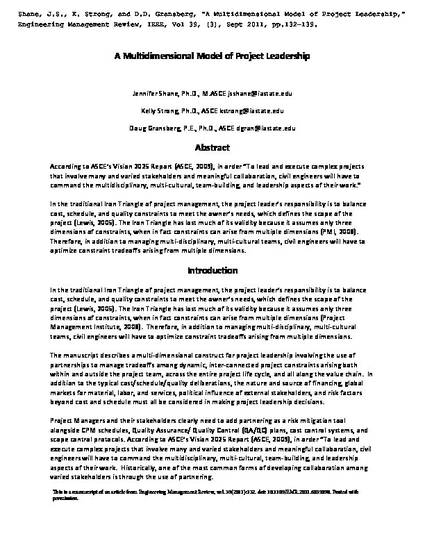
According to ASCE’s Vision 2025 Report (ASCE, 2009), in order “To lead and execute complex projects that involve many and varied stakeholders and meaningful collaboration, civil engineers will have to command the multidisciplinary, multi-cultural, team-building, and leadership aspects of their work.” In the traditional Iron Triangle of project management, the project leader’s responsibility is to balance cost, schedule, and quality constraints to meet the owner’s needs, which defines the scope of the project (Lewis, 2005). The Iron Triangle has lost much of its validity because it assumes only three dimensions of constraints, when in fact constraints can arise from multiple dimensions (PMI, 2008). Therefore, in addition to managing multi-disciplinary, multi-cultural teams, civil engineers will have to optimize constraint tradeoffs arising from multiple dimensions.
Available at: http://works.bepress.com/douglas_gransberg/14/

This is a manuscript of an article from Engineering Management Review, 39(3): 132-139. doi: 10.1109/EMR.2011.6019098. Posted with permission.